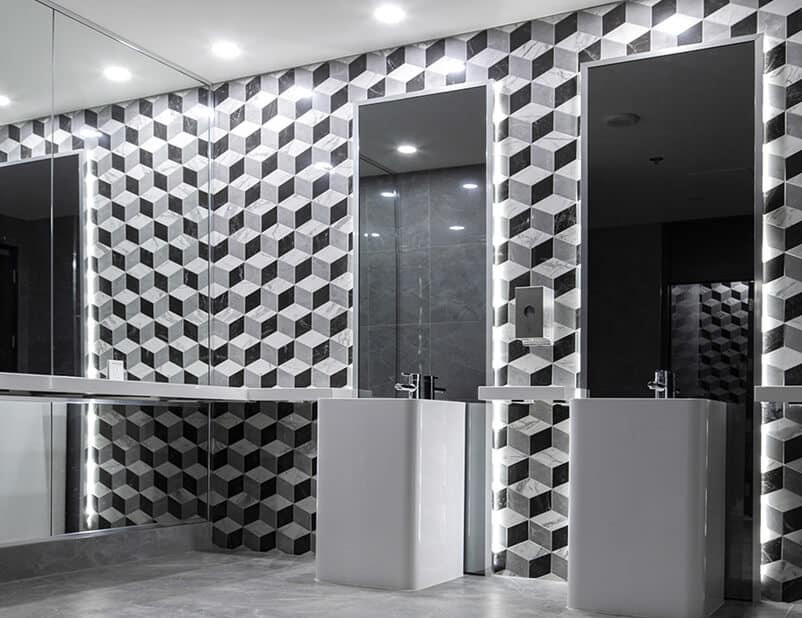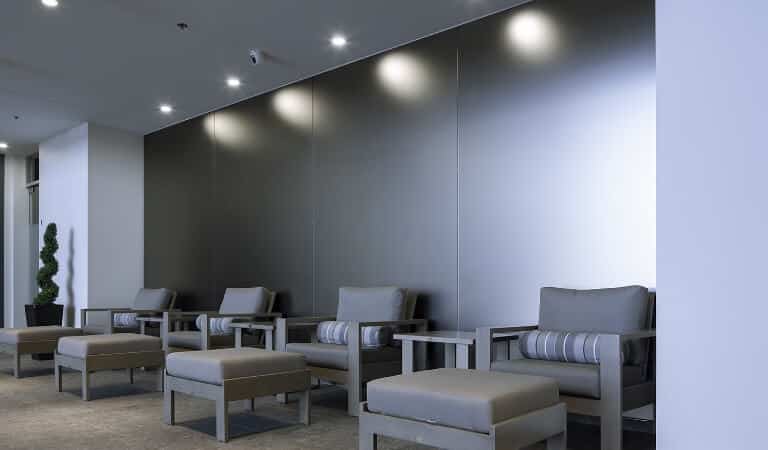By Sylvain Denis, R&D Manager, Walker Glass Co. Ltd.: Although just in time supply is key for many mirror buyers in the supply chain, I believe it’s safe to say that price is the driving factor as mirrors are generally perceived as a commodity – that mirrors are all made the same way.
As someone who’s been involved in the manufacture of mirrors for many years here at Walker Glass, I can say with a great deal of confidence that all mirrors are not created equal. I’ll do my best to provide an overview of what makes a good mirror in a thorough, responsible way.
No manufacturer can make good mirror without high quality raw material – namely glass. Glass of lower quality grade invariably has more defects, bubbles and stones that contribute to defects in the final product including, but not limited to distortion.
Paint and chemicals required to produce mirrors need to be selected in accordance with the specifics of a production line including speed of the line, length of reaction zones, oven and production line equipment quality, etc. Manufacturing experience is critical to properly managing this process.
Some manufacturers use different plating techniques and chemicals to produce mirrors, some apply a single coat of paint, others 2 coats – all affecting the finished quality and long term durability of mirrors.
Once the recipe is set-up, process control is the key to maintaining a high quality mirror during the course of production. The use of ISO to structure this process ensures consistency during manufacturing. Process maps, instructions, forms, check lists … all of these items fall under the umbrella of the ISO structure. Walker implemented ISO in 1998 and this system has benefited the company immensely over the years.
ISO tools are also needed to train new personnel and audits are used to confirm that everybody is doing what they are supposed to do.
Continuous improvement is another key element of the ISO system, from risk analysis to the controls to ensure that changes in the production process will not have a negative impact on the mirror quality.
Quality control is the final check to confirm that a good quality mirror has been produced. The ASTM standard C1503, Standard Specification for Silvered Flat Glass Mirror, covers the quality requirements of finished mirrors including a salt aging test. Interestingly, there is nothing in the standard about testing during production; however, our long experience in mirror manufacturing has taught us how to perform daily internal tests that ensure high quality mirror output at every step of the production process.
Last but not least is the notion of transparency. Environmental product declarations (EPDs) have recently been created to compare efficiency of the entire production process, to communicate and disclose all components of a product and to use this information as a baseline to perform continual improvement. This voluntary, third party verified program constitutes a quality statement and demonstrates a commitment of the manufacturer towards sustainability. I am proud to say that Walker Glass is the only company in the mirror manufacturing business that I’m aware of that is EPD certified.
With more than seven decades in the mirror business under our belts, ISO-9002 certified since 1998 (now ISO 9001:2015) and now EPD-certified, I believe that Walker knows how to make exceptionally good mirrors!


